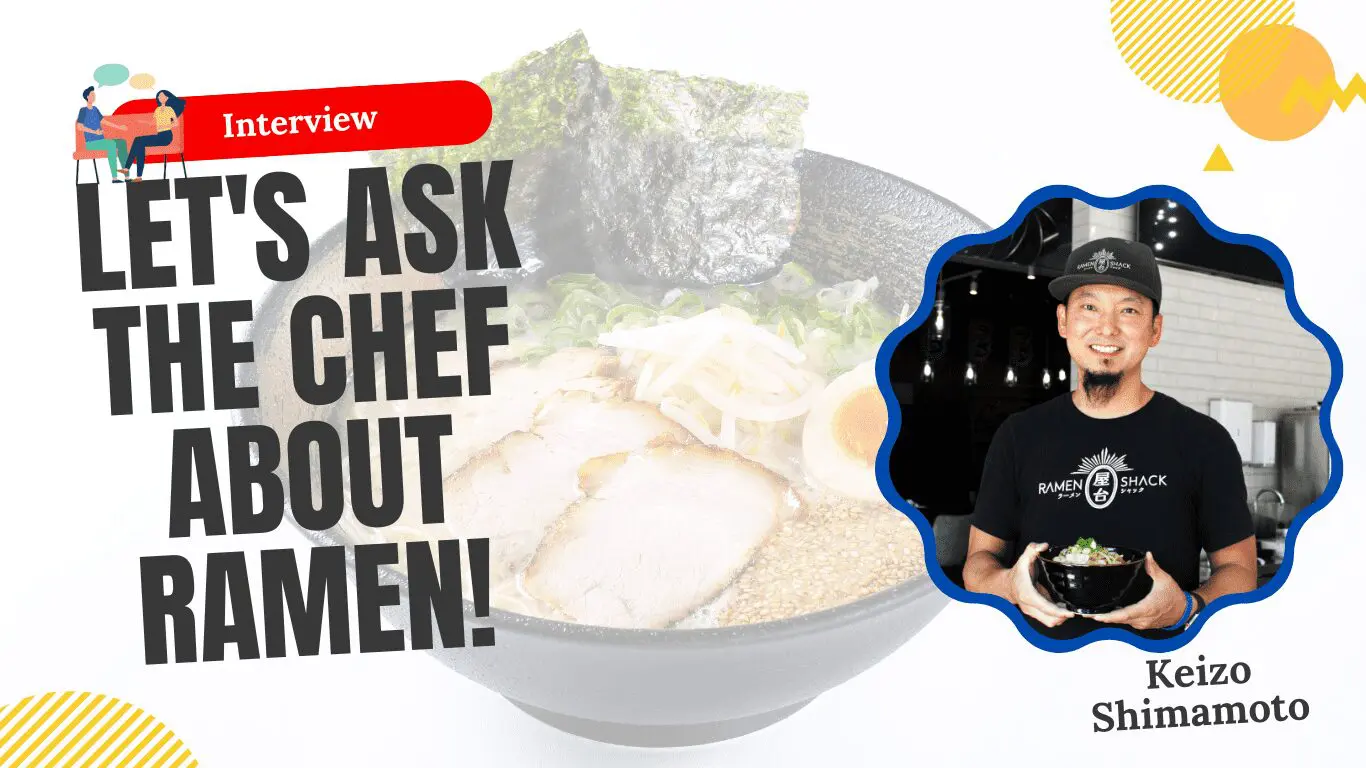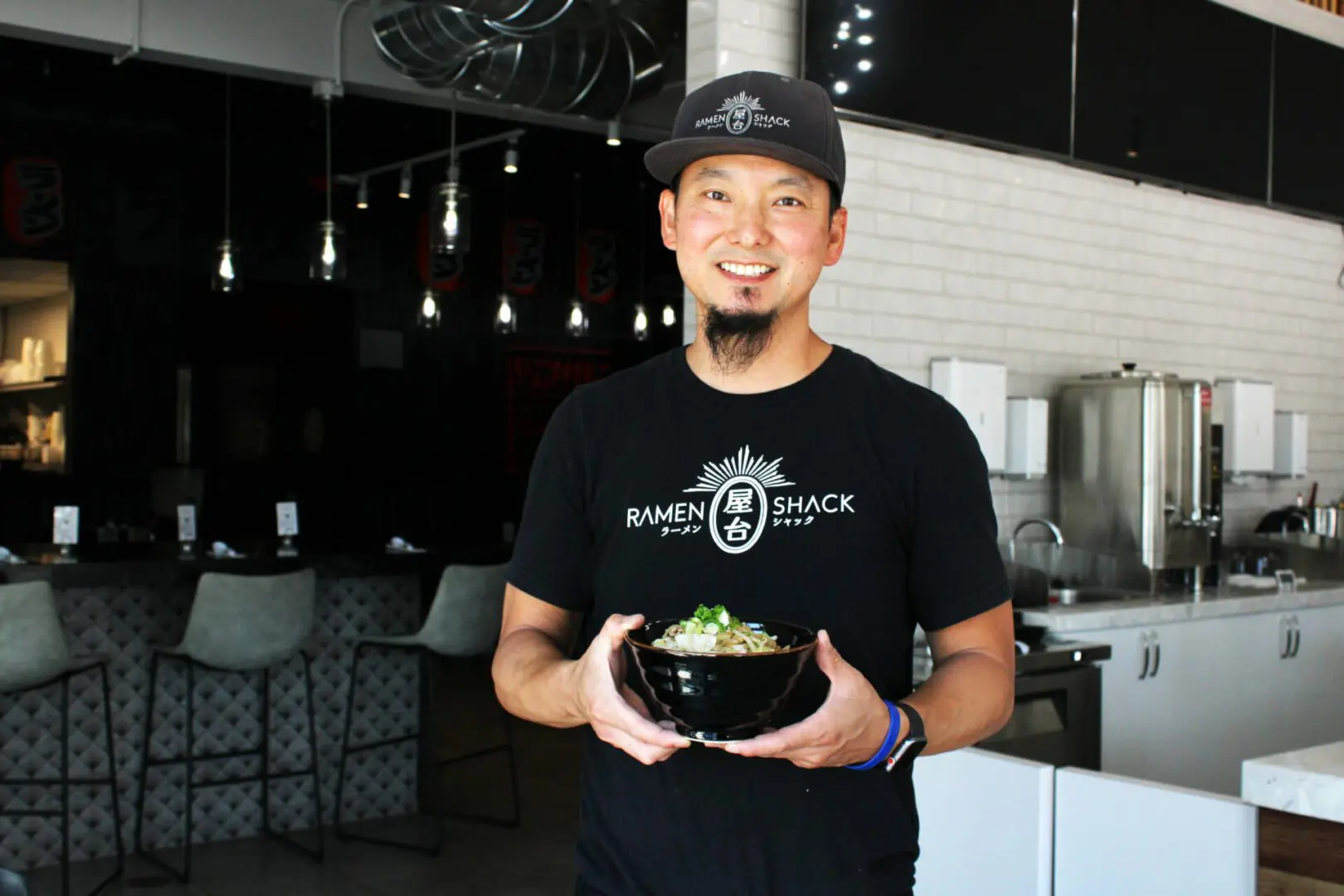Let’s Ask the Chef About Ramen! Part1:How to Make Ramen Noodles: What is the Right Flour for Ramen?
Published: Sep 21, 2022/ Last Updated:Jan 10, 2023
- 3 min read

In this staff blog, titled “Let’s Ask the Chef About Ramen!”, we interviewed Keizo Shimamoto. If you learn the kind of attention ramen and noodle making professionals give in making noodles, you may experience a difference in how you enjoy ramen. This blog is also recommended to those who want to challenge making noodles.

Keizo Shimamoto
Inventor of Ramen Burger and founder of Ramen Shack. Influenced by a burger using chashu he encountered while training in Japan, he invented the Ramen Burger in the United States, which was a huge success. He knows ramen thoroughly and is passionate about making ramen. A self-admitted and renowned ramen freak.
- Index
- Keizo’s background in making ramen and noodles
- The basic things about making ramen noodles
- Blending flours
- Finally
Keizo’s background in making ramen and noodles
– Hello, Keizo-san. Today, we would like to hear about Keizo-san’s commitment to ramen and the depth of noodle making. First, could you tell us about your background in making ramen and noodles?
Keizo:I started making noodles while working for a ramen shop in Japan. Since then, I have been learning from friends in the industry and improving my technique. In 2017, I started a noodle factory in New York selling premium fresh noodles to several ramen shops in NYC, including my own shop, Ramen Shack.
The basic things about making ramen noodles
– What are the basic things we should first know about making ramen noodles?
Keizo:Every ramen noodle recipe consists of wheat flour, salt, kansui, and water. Yes, that’s all! But within these four ingredients there are infinite combinations that can make a unique ramen noodle, with wheat flour being the most flexible.
– We often see a variety of flours lined up in supermarket in the neighborhoods. Among them, which flour should we be choosing?
Keizo:If you visit your local supermarket, there may be many different types of flour to choose from. So how should you choose? I often like to blend my flours and give my noodles a distinct texture and aroma that you can rarely attain with a single flour. Sometimes this will mean blending a hard wheat flour with a softer cake flour. One can simply try blending blind and pray for a good outcome (there is nothing wrong with this approach) but getting to know a little bit about the flour specs can give you a reference point for future recipe testing.
Blending flours
– I see. Even if it is simply called wheat flour, we see that it is necessary to use different kinds of flour to create noodles with character. Are there any more points to be aware of?
Keizo:This is where it gets more technical, but specifically the protein and ash content of the flour you will be using. Although you won’t see flour specs on the back-label of packaging, most brands now provide that information on their websites or will generally give you the information by calling customer support. Below is an example from the King Arthur Baking Company website.
14% Protein | .52% Ash | Malted, EnrichedA true high-gluten flour milled from the highest protein spring wheat. Use when strength is the priority; gives you high volume and extra chew. Perfect for authentic NY-style pizza and bagels as well as adding strength to formulas high in whole grains.West Coast Artisan
11.7% Protein | .52% Ash | Malted, Enriched
A regional all-purpose artisan bread flour milled in California characterized by moderate protein and higher-than-average absorption. Ideal for a full selection of artisan breads, pizza, and pastries.”
In general, the higher the protein content, the firmer your noodles will be. Oftentimes, your desired protein % can only be achieved by blending flours with different specs. This is why it is important to know your flour and to make sure you are choosing the right ones. Ash will affect the color of your noodles and higher ash content will generally mean a darker tint noodle. I have also noticed that a higher ash can lead to a stronger aroma, but this may also change depending on the type of wheat that is used to mill the flour. A higher ash content will also mean that the structure of the noodles will change at a faster rate as it matures. For example, the longer you wait to eat them, the greater the change in quality.
– By blending different flours, you can freely adjust however you prefer, from soft noodles, chewy noodles, dark noodles, and light-colored noodles.
Keizo:That’s what makes it interesting. For initial reference, the pros say that a typical ramen noodle will be around 10% protein and 0.35% ash, so try to use this as your starting point but don’t let it stop you from experimenting with lower or higher concentrations.
Finally
– Finally, could you tell us about your thoughts on ramen?
Keizo:Ramen is life. It is an artform that is transformed by each individual chef. Knowledge and experience are key for chefs to take ramen to the next level and touch a customer’s soul. Ramen is soul food. Good luck and I hope this helps you understand noodles a little better!
Myojo × Keizo Shimamoto
Reference link:
Bakery & Food Service Products | King Arthur Baking